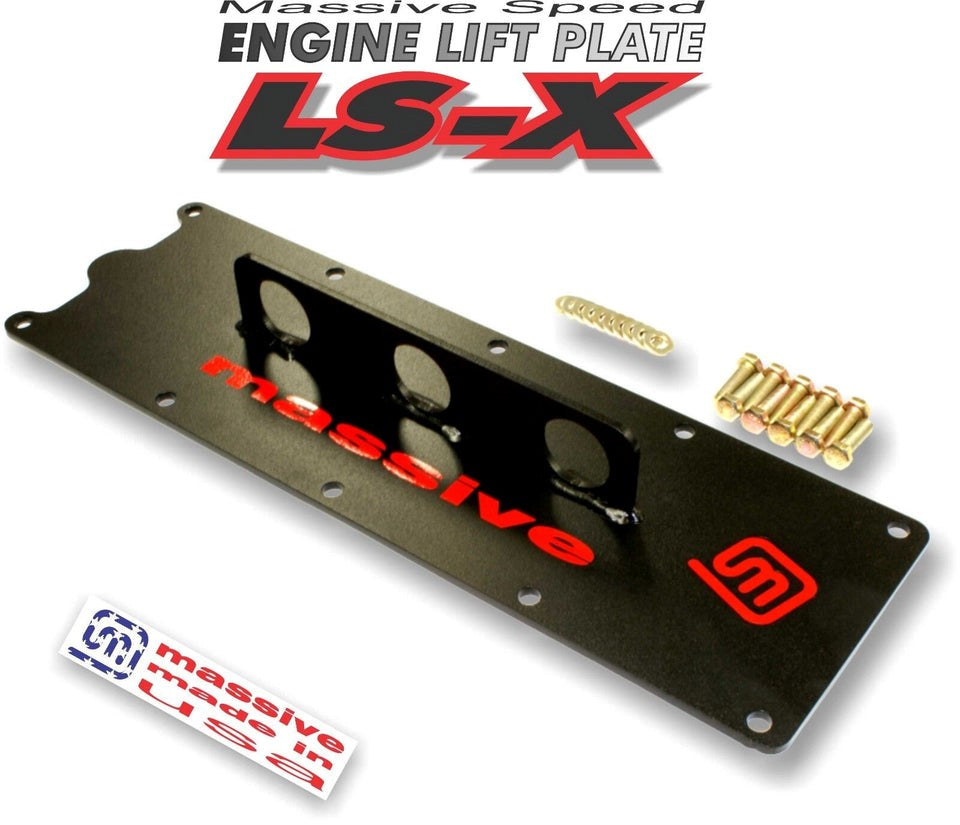
Top 5 Things to Know Before Buying an LS Lift Plate
What is an LS Lift Plate?
An LS lift plate is a crucial component for those who want to improve the suspension and handling of their vehicle equipped with an LS engine. It acts as a spacer, lifting the front end of the vehicle slightly to adjust the suspension geometry. This adjustment can make a big difference in ride quality and the overall stance of the vehicle. The lift plate is commonly used in muscle cars and trucks, especially when upgrading or modifying the engine setup.
Using a lift plate is a straightforward way to correct the front-end height, especially if you’re installing larger tires or if your vehicle has a lowered or lifted suspension. It fits between the front crossmember and the suspension mounts, providing a clean, efficient lift without changing other parts of the suspension system.
How Does a Lift Plate Improve Performance?
A lift plate offers more than just a visual lift. By changing the front suspension geometry, it improves tire clearance and allows better alignment settings. This means your tires maintain better contact with the road, improving handling and stability. The lift plate helps prevent issues like tire rubbing on the frame or bodywork during sharp turns or when driving over uneven surfaces.
Moreover, if you have swapped in an LS engine, the lift plate can help manage the extra weight distribution in the front of the car. This results in a smoother ride and better weight balance, reducing wear on suspension components. The improved clearance also allows for larger brake upgrades, which can be critical if you’re aiming for better stopping power.
Key Factors to Consider When Choosing a Lift Plate
Choosing the right lift plate depends on several important factors. First, consider the height of the lift you need. Lift plates come in different thicknesses, and selecting the correct one ensures your vehicle maintains the proper stance and suspension geometry. Too much lift can cause handling problems, while too little may not resolve clearance issues.
Material quality is another key point. High-quality steel or aluminum lift plates offer strength and durability without adding unnecessary weight. Look for lift plates with corrosion-resistant coatings to extend their lifespan, especially if you live in areas with harsh weather or road salt.
Fitment is critical. Not all lift plates fit every vehicle. Make sure the lift plate you choose matches your specific model and suspension type. This guarantees a smooth installation and prevents complications down the line.
Installation Tips for Your Lift Plate
Installing a lift plate is a manageable job if you have basic mechanical skills and the right tools. Before installation, carefully read the manufacturer’s instructions to ensure compatibility. It’s best to install lift plates on a stable lift or jack stands, so you have good access to the front suspension.
Start by removing the existing suspension mounts carefully. Keep track of bolts and hardware, as you will reuse many of them. Once the old mounts are off, position the lift plate and align it properly with the mounting holes. Tighten all bolts to the recommended torque specifications to ensure safety and reliability.
If you’re unsure about installation, consider seeking help from a professional mechanic. Proper installation is key to avoiding issues like misalignment or premature wear on suspension parts.
Maintaining Your Lift Plate for Long-Term Use
Regular maintenance keeps your lift plate functioning well over time. Check the lift plate during routine vehicle inspections for any signs of rust or damage. Keeping it clean from dirt and debris also helps prevent corrosion.
It’s important to monitor the bolts and hardware securing the lift plate. Over time, vibrations from driving can loosen them, so tightening these bolts periodically is essential. Also, inspect the suspension components connected to the lift plate. Worn bushings or mounts can affect the lift plate’s performance and overall handling.
With simple care, your lift plate will provide lasting benefits, making it a valuable upgrade for your vehicle.
The Bottom Line
An LS lift plate is a must-have tool for anyone working on LS engines. From ensuring safety to improving workflow, the right plate can make engine swaps smoother and more secure. At Massive Speed System, we offer lift plates built with precision and durability in mind.
Whether you're an enthusiast or a pro mechanic, choosing a high-quality lift plate can add real value to your engine project. Get the right tools for the job, and you'll notice the difference from the first lift.
FAQs About LS Lift Plates
1. Can an LS lift plate be used on any vehicle?
LS lift plates are designed for specific vehicles, especially those with LS engines. It’s important to check compatibility with your car’s make and model before buying.
2. Will a lift plate affect my vehicle’s warranty?
Modifications like lift plates may affect warranties. Check with your vehicle manufacturer or dealer before installing any aftermarket parts.
3. How much lift does a lift plate provide?
Lift plates usually offer between 1 to 2 inches of lift. The exact height depends on the thickness of the plate you choose.
4. Do I need special tools to install a lift plate?
Basic hand tools and a jack or lift are typically enough. However, a torque wrench is recommended to tighten bolts to proper specifications.
5. How often should I check my lift plate?
It’s good practice to inspect your lift plate and related suspension components every few months, especially if you drive on rough roads.
